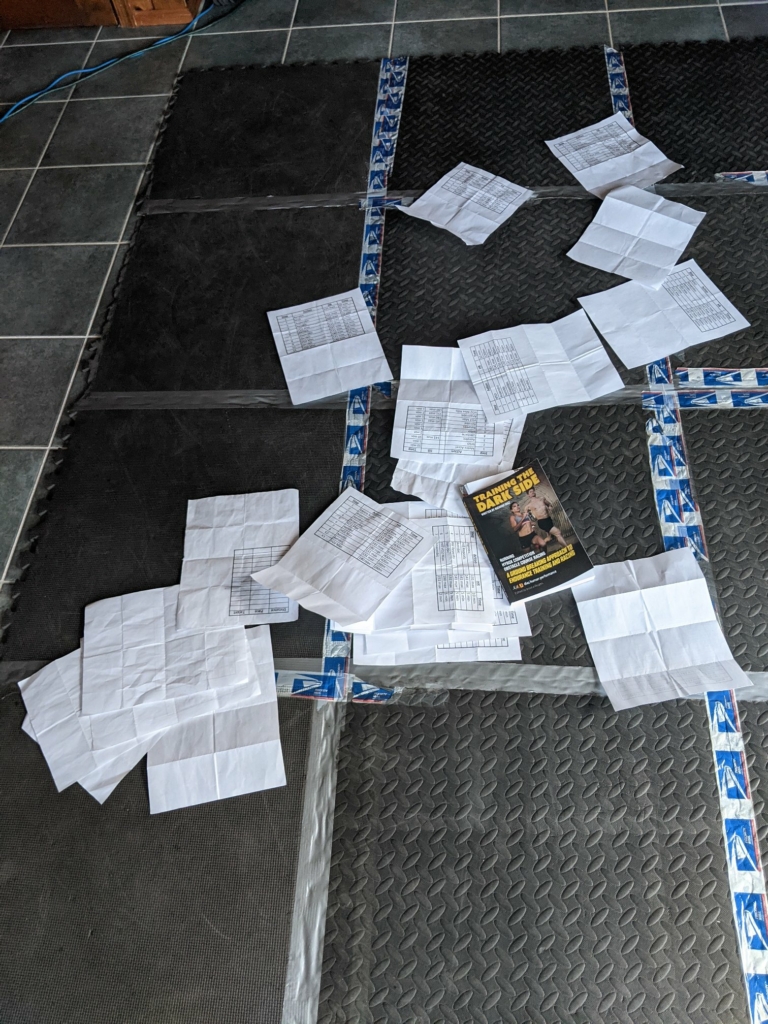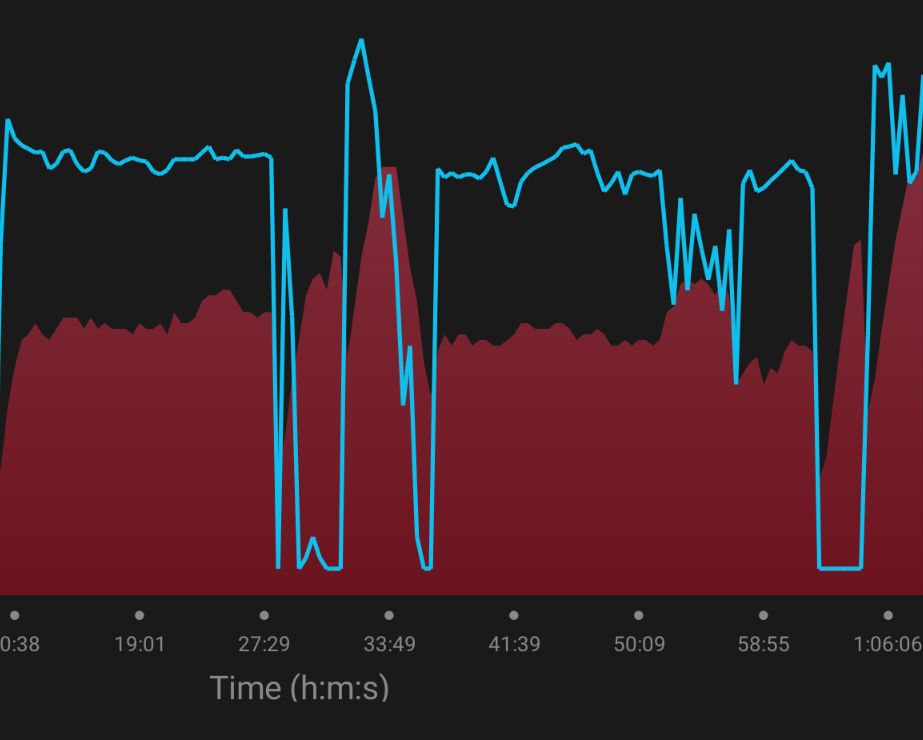This review starts with a congratulations to Veejay Jones for winning first place in the men’s elite Spartan Race Sprint Jacksonville U. S. National Series premier. Furthermore, congratulations to Veejay’s coach, Richard Diaz. About two months ago, Richard claimed that Veejay would win, and win big. Indeed, Veejay’s time was faster by 1:11 than second place Ryan Woods. Coach and athlete claimed that Diaz’s new Training the Dark Side method would be responsible for this result. But does this win really support the claim? Where’s the data? What about the next race?

30 days of plans – I carried one for each run so I knew what to do next
Richard has been in this business for decades. When OCR came around, he jumped into the opportunity to expand his realm beyond training runners and triathletes. Since I became familiar with Coach Diaz in 2016, his results have shone through OCR athletes such as Hunter McIntyre, Rose Wetzel, Faye Stenning, and now Veejay Jones. Armed with decades of data across thousands of other athletes, Diaz was always refining his training techniques. I slowly joined his approach years ago but when Training the Dark Side debuted early this year, I jumped right in, bought the book, read it, and immediately dropped my current training program in favor of the Dark Side. Just one more data point for Richard to add to his credit.
I posted my results daily on social media. Then, about a week into the program, Richard contacted me to do a podcast. Listen here for more on how things were going then in my early stages of the 30-day program he produced in conjunction with his book. But first let’s back-track a bit to why I think this was a success for me, Veejay, and others who follow this unique training.
The first two-thirds of the book are a reiteration of Coach Diaz’s firm insistence on how to run. For me, it starts with why. I don’t want to get injured anymore. Not from running. Not from anything. While the book part is nice, to me, readers won’t get it unless they attend an in-person clinic offered multiple times a year by Richard. There, he will help you fix your running mechanics. That happened for me two years ago. Then I spent those next two years reinforcing his techniques. My performance on the course improved from consistently winning top 10% in my age group in 2018 to consistently winning top 10 overall in my age group in 2019. My goal in 2020 was to podium. Alas, that was not to be. I ran one race last year and took second place AG although there was no official AG category.
Right around that time Richard started talking about his new book. When it hit the shelves, I got it as a Christmas present. I sensed that it might be what I was looking for to ensure a podium in 2021. Well, I haven’t raced yet. But I did complete the 30-day program that supplements the book. I remained injury free even though my mileage and intensity ramped way up.
But mileage and intensity are not the secrets of the Dark Side master Diaz. They are outcomes. The secrets are what he calls flows. Like I said, the first part of the book was a reiteration of what I’d already been doing for two years. It’s critical. As Coach says in his trademarked slogan, “You can’t win if you run like shit.” Check! Got that fixed. That had me ready for the Dark Side. I will tell you, my readers, to be very careful here. IMHO, don’t jump into this program until first you do a clinic in-person with Richard Diaz or some other coach who can help you fix your running mechanics. Don’t start this program if you are injured already. Don’t start this program thinking you already know this stuff without having the empirical data to prove it.

Top – My VO2 Max run pace over 30 days – needs work!
Bottom – Scatterplot of VO2 Max run times vs distance – consistent
Because such data is required. You need the heart rate data and the video data to prove to yourself that your body is doing what is required of it. At fifty-nine years old, this is how I train to get the results I want. It’s this kind of data that Richard has acquired over his tenure which supports his new training approach. Heart rate and VO2 data prove that these flows work as designed. They prove that the heart rate response combined with the body’s fuel-burning of aerobic pace fat, anaerobic pace carbs, and in-between all that the rebate conversion of lactate, is the secret to enabling the flows.
So, what did my data reveal? Here are a few results. My Garmin calculated VO2 max went up 4 points. My aerobic HR went down about 10 bpm. That means I can do more work with less effort. That explains why I could put on more aerobic mileage without feeling the impact. My recovery times in between going from aerobic to anaerobic or VO2 max and back to aerobic (like running easy flats for 10 minutes then doing hill repeats for 5 minutes then back to the flats without rest) was a rapid 60 to 90 seconds. Finally, I shaved 30 seconds off my aerobic Mile Time Trial.

My Garmin calculated VO2 Max improved 4 points in 30 days
One of the biggest surprises I got was this tidbit I IM’d to Richard a few weeks ago: “Good afternoon Richard. I wanted to tell you about what happened to me on Day 19 of Training the Dark Side. This was completely unexpected. But since the evolution was short and since I felt real good at the end, I did another Anaerobic, aerobic, VO2 max cycle. When I looked at the data, I saw that I ran that last VO2 faster than the first two and with less effort and with more distance. I am super impressed with the results of this program. Lactate rebate!”

Heart Rate response to pace demand was as predicted by the plan
In other words, after completing a full training day, I was tired. But I sensed there was still plenty of fuel in the tank. I wasn’t sore. My heart rate was still responsive to my body’s demands. So, imagine you’re in a race and you’re within 400 meters of the finish line with a few obstacles to go. The race is tight and you have competitors on both sides of you. Will you have enough in the tank to win?
That depends. As Richard said in our podcast, what ends up happening is a lot of racers will toe the line and then take off like a shot, forgetting everything they learned in their training. As a result, they’re burned out way before the finish line. You’ve got to trust the process and let it work for you on the course.


Leave A Comment